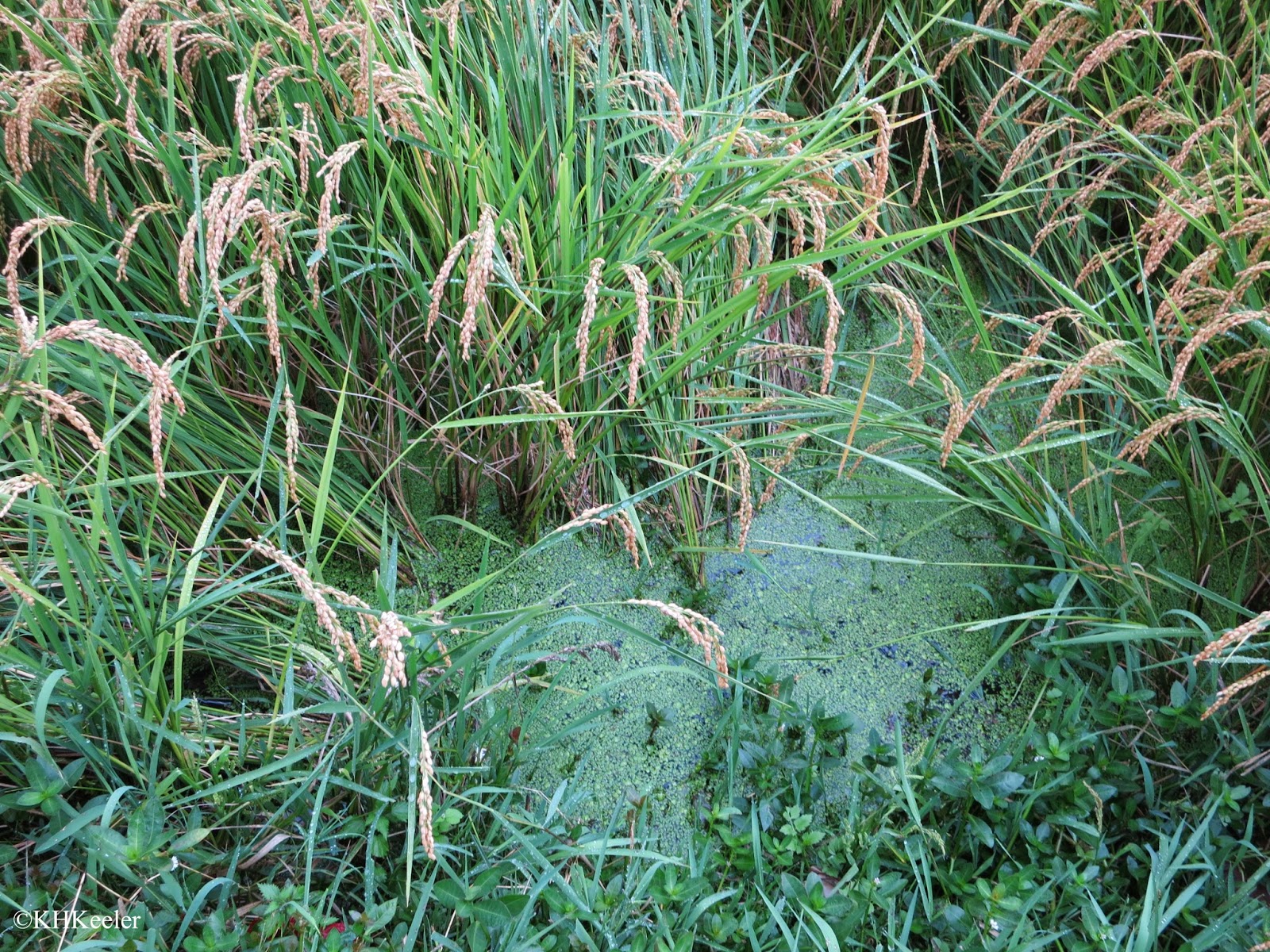 |
At the end of September in 2013, I came into Dali in Yunnan (southwestern China), just as the rice was about to be harvested. I was on an Art in China tour with the Asian Art Association of the Denver Art Museum (coordinated by Access China Tours). (I wrote a blog giving an overview of the trip: see overview blog). China is famous for its rice, but in fact rice is grown only in the southern half of China. Historically the north grew millet, now it grows corn (maize). Here in southern China, however, rice is king.
 |
| ripe rice, Dali, China |
 |
| ripe rice, Dali, China |
We arrived in a drizzle, which seemed like a good thing in an agricultural area, but of course the farmers wanted dry rice to harvest, so they were not enjoying the rain.
 |
| rice straw drying |
Dali is in Yunnan, the southwesternmost province of China (see map). It borders Vietnam, Laos and Burma. More ethnic groups live in Yunnan than any other province of China, something over 50 groups. The land is cut by deep parallel rivers, rises east to west toward the Himalayas and has small and large mountains, making a complex environment in which small ethnic groups developed different customs and languages.
Around the city of Dali, the dominant ethnic group is the Bai People. Bai is Chinese for white, and the name is often explained as referring to the Bai People's love of the color white--white clothes, white houses. While they certainly do like white, the name goes back 1,800 years or more and is rooted in Bai culture. I can't tell if bai means white in Bai but the Bai language is so distantly related to Mandarin Chinese that experts argue about the relationships, that it may not. If not, there's a neat match between their color choices and the name.
 |
| white houses of Dali, Yunnan |
I don't have as good pictures of the houses as I'd like because we stayed at a lodge outside the city. The lodge, the Linden Centre, was very nice and surrounded by the rice fields. Its buildings had the classical white paint too, but in my pictures--focused on the rice I admit--the white paint is hidden behind the walls:
 |
| Linden Centre and rice fields, Dali China |
The Dali area was and is strongly agricultural, raising rice in the warm wet climate. Like much of Yunnan, the area is mountainous (note the mountains in the background of my photos) so mining contributes to the economy. They raise tobacco as well as rice, though I did not see tobacco fields, to supply the vast population of Chinese smokers. Tourism is an important source of revenue as well. Tourists from the rest of China are taking advantage of their greater prosperity and of improved roads and airline service to visit the area. It has been a destination for foreign tourists for a very long time.
 |
| rice harvest, Dali, Yunnan |
It was certainly beautiful!
Comments and corrections welcome.
Kathy Keeler
More at awanderingbotanist.com
Join me on Facebook: https://www.facebook.com/AWanderingBotanist
Chin are covered with see nick beauty i am very interest to visit this country.,
ReplyDeleteChina travel
This comment has been removed by the author.
ReplyDelete